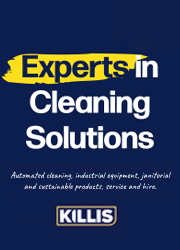The UK Government has published its ‘Working safely during coronavirus (COVID-19)’ guidance for employers, to help them get their businesses back up and running.
As lockdown measures were slightly relaxed on Monday, some workers in a variety of sectors have been going back to their workplaces, but on Tuesday this led to uncertainty in some sectors over how this could be done safely.
The new guidance seeks to rectify those shortcomings by providing a series of ways both employers and employees can help minimise the spread of COVID-19.
The government has consulted approximately 250 stakeholders in preparing the guidance. It has been developed with input from firms, unions, industry bodies and the devolved administrations in Northern Ireland, Scotland and Wales and in consultation with Public Health England (PHE) and the Health and Safety Executive (HSE), to develop best practice on the safest ways of working across the economy, providing people with the confidence they need to return to work.
The guidance states that: “Employers have a duty to reduce workplace risk to the lowest reasonably practicable level by taking preventative measures. Employers must work with any other employers or contractors sharing the workplace so that everybody’s health and safety is protected.”
In the context of coronavirus, this means working through certain steps in order:
- Increasing the frequency of handwashing and surface cleaning.
- Businesses and workplaces should make every reasonable effort to enable working from home as a first option. Where this is not possible, businesses must make every reasonable effort to comply with the social distancing guidelines.
- Where social distancing isn’t possible, businesses should consider whether that activity need to continue for the business to operate.
- Further mitigation actions may include: frequent hand washing, keeping activity time as short as possible, using screens or barriers to separate people from each other, using back-to-back or side-to-side working, and reducing the number of people each person has contact with by using ‘fixed teams or partnering’.
- Finally, if people must work face-to-face for a sustained period with more than a small group of fixed partners, then you will need to assess whether the activity can safely go ahead. No one is obliged to work in an unsafe work environment.
For the full guides on keeping people safe,click here.














































